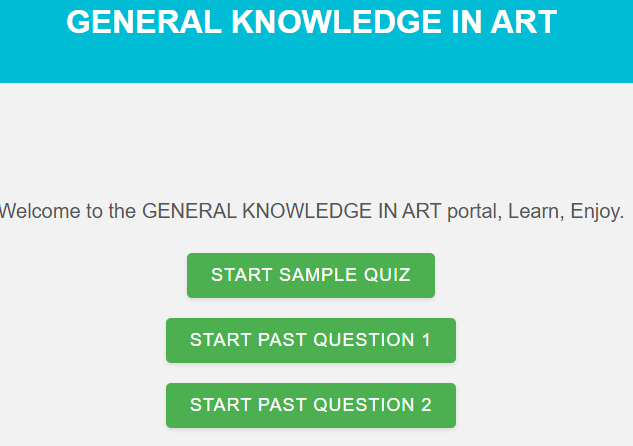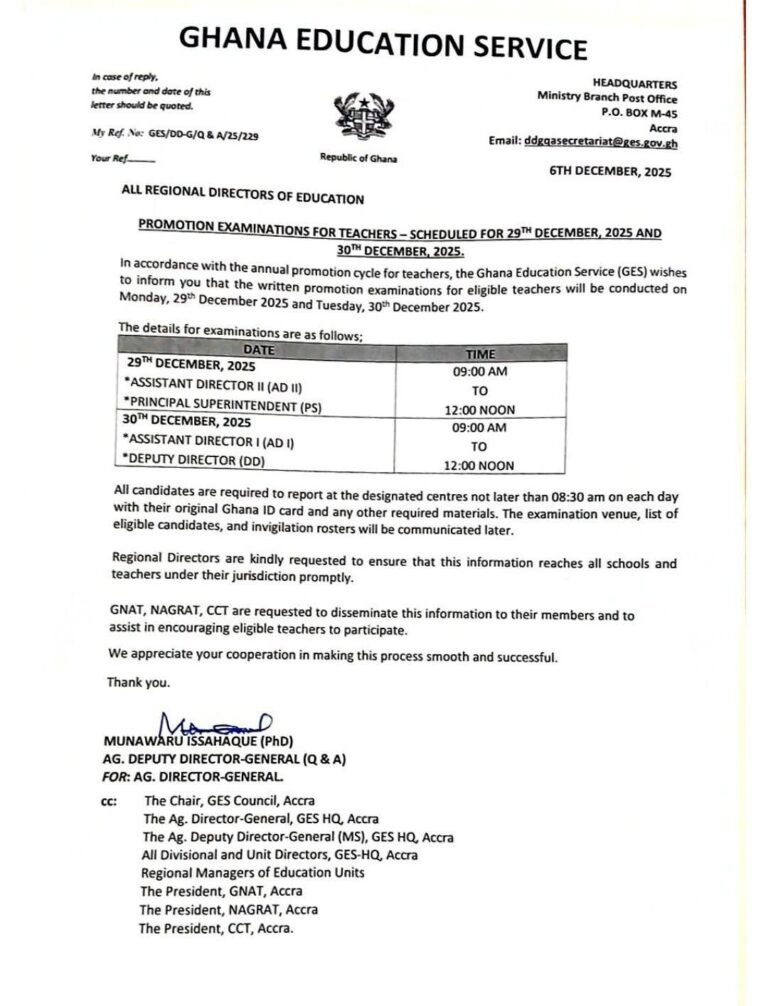
NTC GTLE PAST QUESTIONS FOR GENERAL KNOWLEDGE IN ART FOR JHS AND SHS.
Are you preparing for the Ghana Teacher Licensure Examination (GTLE) in General Knowledge in Art? This comprehensive guide covers the content areas, competencies, and table of specifications to help you excel in your exam.
Content Areas & Competencies
1. General Visual Art Concepts
1.1 Introduction to Visual Art Education
-
Definition of Visual Arts
-
Career opportunities in Visual Art disciplines
-
Tools, materials, and key terminologies
-
Major production techniques
-
Contributions of renowned artists to national development
-
Role of Visual Art in Ghana’s economy
1.2 Drawing and Composition
-
Types and purposes of drawing
-
Drawing tools, materials, and equipment
-
Shading techniques and perspective in composition
-
Aesthetic principles in analyzing artworks
1.3 Introduction to Design and Technology
-
Elements and principles of design
-
Creative process in design & technology
-
Lettering in design (block letters, functions)
-
Printmaking techniques (direct printing method)
-
Using ICT in 2D & 3D art production
2. History of Global Art
2.1 Prehistoric Art
-
Origins, locations, and significance
-
Stone Age techniques and media
-
Influence on contemporary Ghanaian art
2.2 African Art
-
Egyptian Art: Geography, philosophy, art forms, techniques, functions
-
South African Art: Socio-cultural roles, styles, themes
2.3 Ghanaian Art & Artists
-
Indigenous vs. contemporary Ghanaian art
-
Contributions of Ghanaian artists
-
Cosmological influences on art production
2.4 European Art
-
Classical (Greek & Roman): Sculpture, architecture, pottery
-
Renaissance Art: Key characteristics, techniques, exponents
-
20th-Century Movements: Cubism, Impressionism, Expressionism, Fauvism, Surrealism
2.5 Oriental & Oceanic Art
-
Indian, Chinese, Japanese Art: Religious & cultural influences
-
Polynesian & Melanesian Art: Functions and socio-economic significance
3. Art Appreciation & Criticism
-
Definitions of art appreciation vs. criticism
-
Logical sequence for analyzing artworks
-
Importance in maintaining art standards
4. Entrepreneurial Skills in Visual Arts
-
Setting up an art enterprise (business plan, risks, ethics)
-
Organizing art exhibitions
-
Writing artist statements & designing business cards
-
Sustainable development in Visual Arts
Exam Structure: Table of Specifications (100 MCQs)
| Content Area | L1 (Recall) | L2 (Skill/Concept) | L3 (Strategic Thinking) | L4 (Extended Thinking) | Total |
|---|---|---|---|---|---|
| 1. General Visual Art Concepts | 4 | 4 | 2 | – | 10 |
| 2. Drawing & Composition | 2 | 2 | 4 | 3 | 11 |
| 3. Design & Technology | 2 | 3 | 2 | 3 | 10 |
| 4. Art Appreciation & Criticism | 2 | 1 | 1 | 2 | 6 |
| 5. Prehistoric Art | 3 | 2 | 2 | 4 | 11 |
| 6. Egyptian Art | – | 3 | 4 | – | 7 |
| 7. South African Art | – | 2 | 3 | 1 | 6 |
| 8. Oceanic Art | – | 2 | 3 | 2 | 7 |
| 9. Indian Art | – | 2 | 3 | 1 | 6 |
| 10. European Art | 2 | 2 | 2 | 4 | 10 |
| 11. Ghanaian Art | 4 | 2 | 3 | – | 9 |
| 12. Entrepreneurial Skills | 1 | 3 | 3 | – | 7 |
| Total | 15% | 25% | 30% | 30% | 100% |
Exam Levels:
-
L1 (Recall): 15%
-
L2 (Skill/Concept): 25%
-
L3 (Strategic Thinking): 30%
-
L4 (Extended Thinking): 30%
Study Tips for Success
✔ Focus on higher-order thinking (L3 & L4 = 60% of the exam)
✔ Practice analyzing artworks (appreciation & criticism)
✔ Memorize key historical timelines (Prehistoric, European, African Art)
✔ Understand entrepreneurial aspects (business plans, exhibitions, ethics)
🔗 Need past questions? Check the HERE for practice tests!
Got questions? Drop them in the comments below!
Follow us for more Updates Here
AND SHARE




